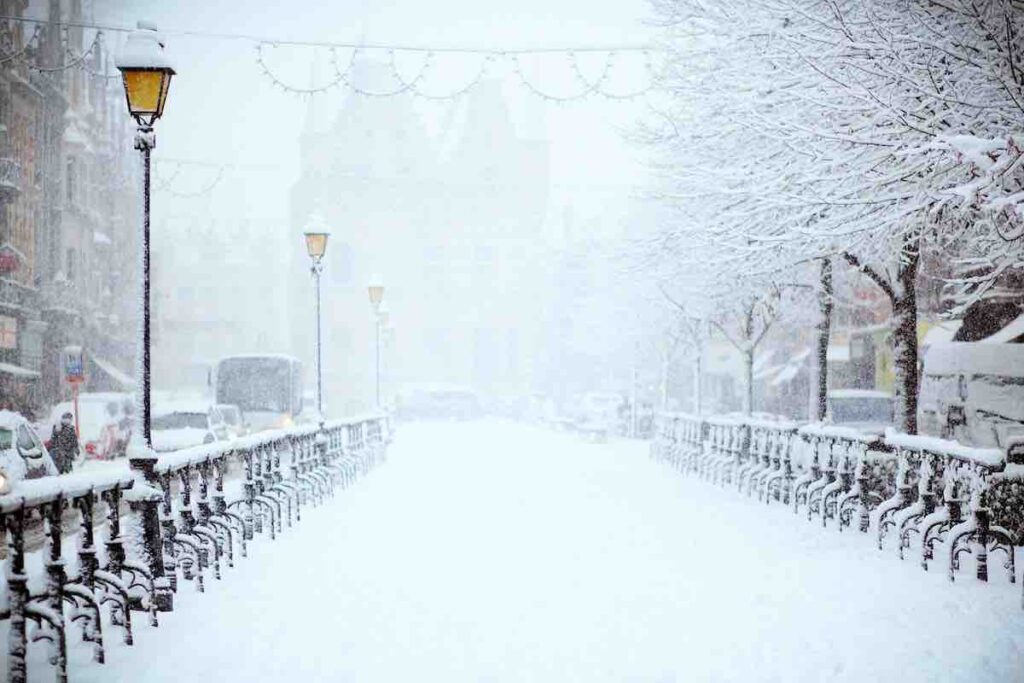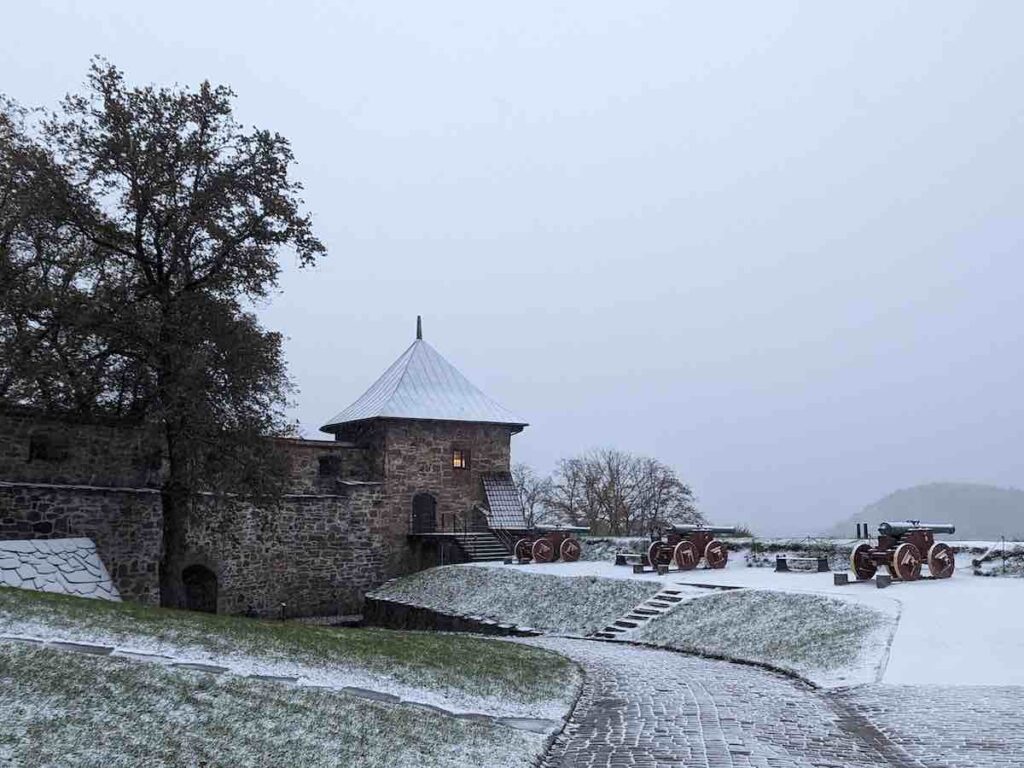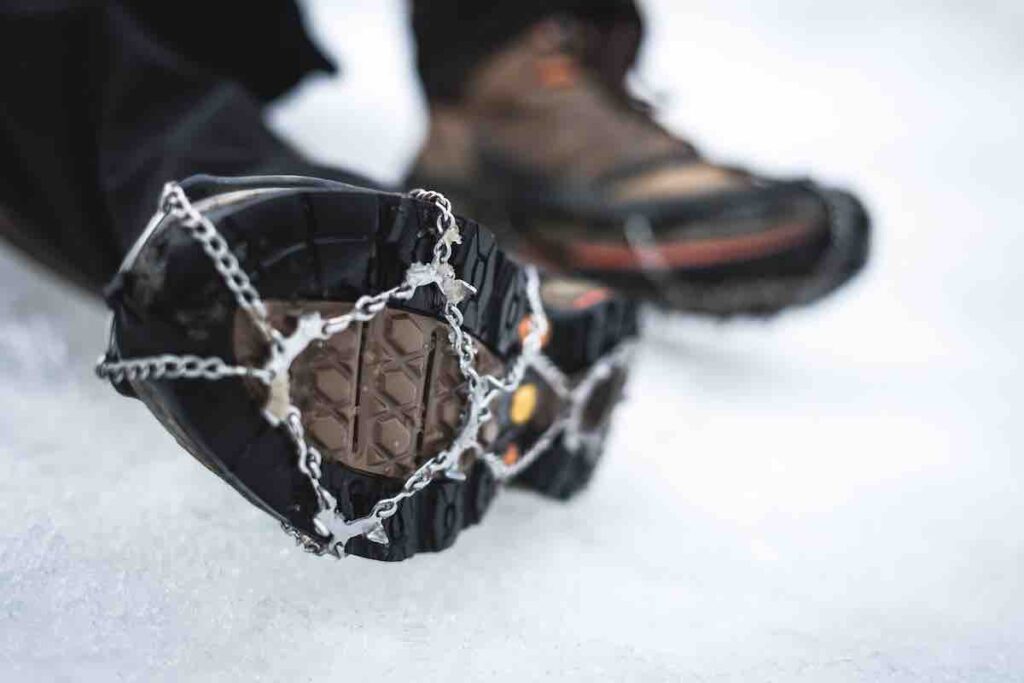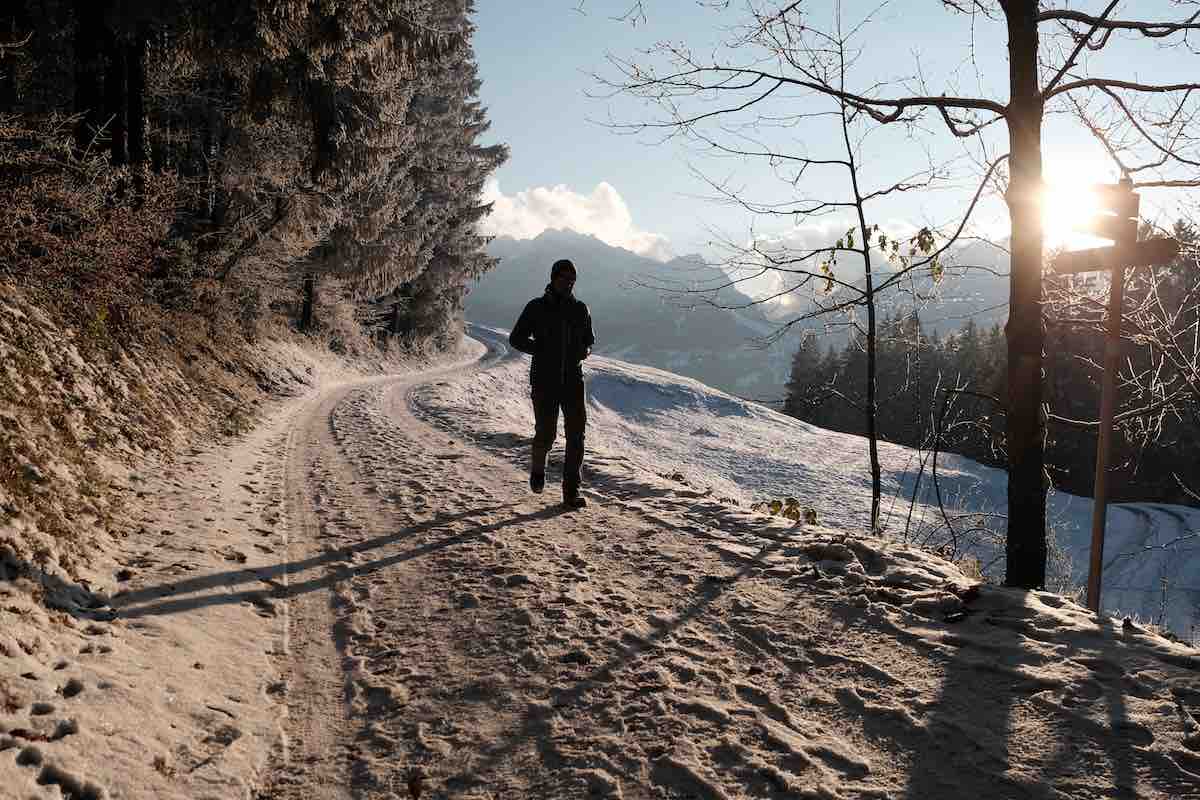Snow disarms, disrupts and slows down most things in life. Running is probably no exception.
However, running in the snow can also be a gift.
Majestic white landscapes. Crisp, cleansing air. More peaceful running routes. The first step on untouched snow. Better sunsets and sunrises. The reward of a hot meal.
I felt inspired to write this after running in the snow in York. A thoroughly uplifting experience. One I needed to share.
Fresh snow is usually safe to run on, but take it easy, especially the first few minutes. All it takes is a few adjustments.
So, whether it catches you off guard or you’re tuning into the forecasts, here’s my top tips for running in the snow like a pro.
Top Tips For Running in the Snow & Ice
How to experience the full miraculousness of running in the snow before it vanishes into mush:
#1: How to Spot Icy Patches on Roads & Pavements
Packed-down, firm snow is an excellent running surface, especially on trails.
However, most people are put off by slippery pavements. This is almost always a bigger problem when walking on ice or snow compared to running. This is because the strike and push-off points are directly under the body when running, versus your heal when walking. If there’s no grip, the angular force must slide with little time for adjustment. Of course, it helps that your hands are always out of your pockets when running, for added balance.
If the snow doesn’t settle it can be a problem, unless you know how to spot icy patches.
Longer, darker days mean you’ll want to look ahead as well as down.
Despite the name, black ice is actually transparent. Look out for darkened or shiny patches. One side of the road is usually less icy than the other, depending on how your precipitation falls. Take extra care on corners too.
I tend to use the grassy edge for traction and opt for gritted routes if road running when it snows.
Just be a little more cautious than normal.
#2: Slow Down & Enjoy the Ride

Speed isn’t everything. Don’t force your usual pace or distances when running on icy or snowy roads.
A successful winter’s training is measured by consistency.
A slower pace not only increases your ground contact time, and improves stability, but it also gives extra grace to spot slippery patches of ice and react if you do start to slip.
When you run at a leisurely, comfortable pace, you’re far less likely to suffer other common running injuries. This is because you’re going easier on your joints, muscles, and connective tissues, while also strengthening your lower body muscles.
Above all, running in the snow can be a magical experience, so slowing down helps to take it all in.
Related reading: Take Yourself on an Awe Run
#3: Warm Up Before Running in the Snow
As temperatures drop it’s important to promote blow flow pre-run and warm your muscles up.
Running on cold days is hard enough, but frigid temperatures mixed with cold muscles can be a recipe for injury.
A few jumping jacks, leg swings or donkey kicks can work wonders. What’s best, as on-the-spot exercises, you can do them indoors before you venture out in the cold.
Then, as soon as you head out the door, start running. Don’t allow your body to cool-down.
#4: Stay Hydrated When Running in the Snow
Hot beverages instantly come to mind when thinking about the cold weather, however it’s important to stay on top of your water intake too.
Your body won’t crave ice-cold water like you do in the heat, so you’ll need to be disciplined. Don’t rely on thirst to tell you when you need to drink water.
Good hydration also helps you to stop the burn felt in your lungs when running on a cold day.
If you run first thing in the morning, drink eight ounces of water when you wake up to reduce natural dehydration.
During your run, aim to consume 16 ounces of water for every hour you are running.
#5: Head to the Trails and Flat Routes

Snow elevates otherwise ordinary exercise. Majestic white landscapes, the senses awakened, as we move beyond our individual lives to appreciate something much bigger. My inner child comes out whenever it snows, wanting to hit the country routes.
Not only is running in the snow a magical experience, it’s also often safer than doing so on smooth roads.
Trails inherently have more traction underneath the snow, albeit some hidden obstacles too. The tree cover also prevents the sun from melting the top layer of snow to create ice.
Avoid hills – in either direction – to maintain traction and control.
#6: Factor in the Best Wind Direction
There’s nothing worse than icy cold wind and rain blasting you in the face for longer than it needs to.
If wind’s in the weather forecast choose a loop route, with the wind on your back on the return leg. Not only is it more pleasant and easier to finish, it helps you to avoid worse wind chill on a sweaty face.
Keep in mind that exposed skin is especially vulnerable to snow and strong gales. A breathable balaclava will be your friend when running in blizzard conditions.
#7: Keep Your Hands Free & Use Your Arms More
The upper body (including your arms) can contribute to balance almost as much as the lower body.
As any child on the playground knows, the best way to improve your balance on a cylindrical object is to stick out your arms to the sides perpendicular to your body in order to widen your support.
This same principle can be applied when you’re running on the ice, although in a less sever manner.
Instead of tucking your elbows in, keep them away from your body and your hands braced for action. Hopefully you’ll never need to use your hands to cushion a fall but wearing gloves can also help in such an instance. When running in the cold without them, I used to be guilty of curling my hands into a fist and curling them in my sleeves – a small mitigation against the cold, but a big impediment should I be hurtling towards the ground.
What to Wear When Running in the Snow
#8: Wear Trail Shoes or Ice Cleats for Traction

The biggest adjustment you can make when running on ice or snow is added traction.
As a minimum, I switch to a good pair of trail running shoes. Trail shoes offer better traction, support, and protection compared to road-running shoes, making it easier to navigate uneven terrains and slippery surfaces. Look for features like deep lugs for grip, stiffer soles for stability, and reinforced uppers for durability.
If it’s particularly icy, you can attach ice cleats to your running shoes in the snow. Best described as spiky overlays for the sole of your shoe, they dig deep into the snow to increase your traction. I saw a ton of runners wearing these in Olso on my recent running tour there.
You’ll also find the added grip allows you to run in snowy conditions with more confidence as you land every step.
#9: Wrap Up Warm When Running in the Snow
As the old saying goes: there’s no such thing as bad weather, only unsuitable clothing.
The correct winter running gear can fend off wind chill, keep you dry, and safe.
The secret is keeping your fingers, toes and head warm, and layering up.
To do so I recommend the following winter running gear:
- Merino wool zip fleece
- Head band or warm hat
- Wool socks
- Mittens or lightweight gloves
- A reflective vest
- Running lights
Be sure to avoid cotton as it absorbs moisture and holds damp against your body. Opt opt for synthetic materials such as wool or polyester instead.
For the extreme cold you might also consider:
- Running tights
- Hand warmers
- Neck gaiter or breathable balaclava
The last item on that list might seem overkill, but wearing a scarf around your mouth can stop the burn in your lungs. It acts as a filter, humidifying the air before it’s inhaled into your lungs.
#10: Last But Not Least: Take Lots of Photos

Nature is at its most photogenic when it’s snowing.
If it hits early in the year, you’ll get the colour of autumnal leaves against the bright white canvas. Something I was lucky enough to experience when doing a running tour after heavy snowfall in Oslo last month.
It’s also a deeply spiritual experience.
Rainer Maria Rilke, one of the most expressive poets in history, considered the cold season the time for tending one’s inner garden. A chance to reflect, heal and feel an almost overabundance of inner being:
“In the depths of winter, I finally learned that within me there lay an invincible summer,”
There is something uniquely special about running in the snow that, like the sheet white colour palette, strips back all non-essential noise and helps you to focus on what matters most. I hope you’re able to get out running this winter in all its elemental and existential beauty.
So remember, Christmas is a time of over indulgence and epic runs. Don’t let a little snow put you off doing what you love.

